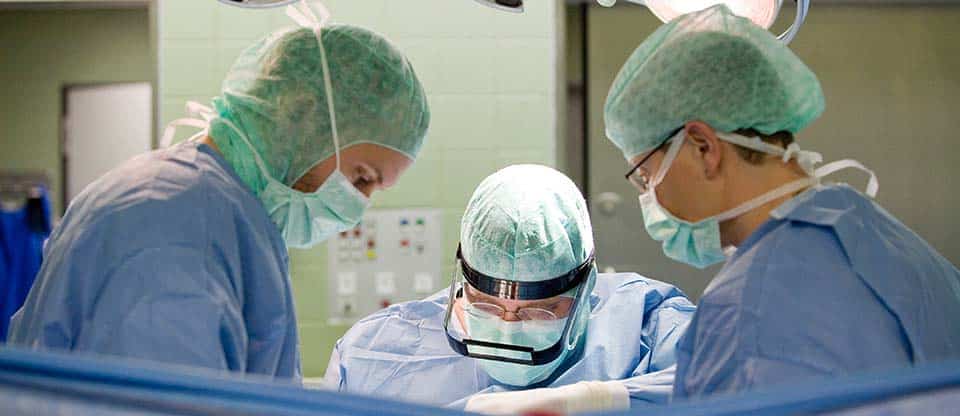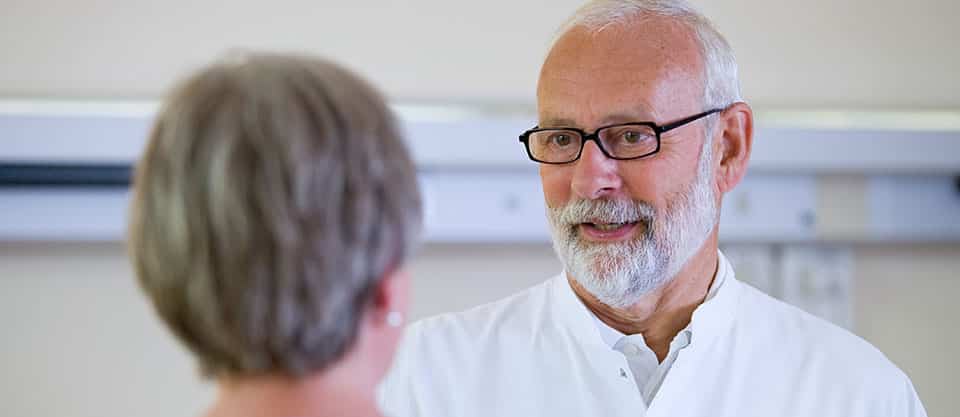Breast self-examination
Self-examination of the mammary gland consists in regular examination and palpation by the patient of her own mammary glands with a preventive purpose for the timely detection of possible changes in the structure of the mammary gland. It is necessary to feel the mammary gland from the 10th day after menstruation. The breast self-examination procedure is more successful if the skin of the breast is moist or cream is applied to it. In this case, the existing dense nodes are easier to feel.
Medical examination
During preventive examinations, experienced gynecologists examine and feel the patient's mammary glands in order to detect cancer. At the same time, palpation (palpation) and axillary lymph nodes are systematically carried out. In 60% cases, a breast tumor is detected by palpation. With hereditary risk factors (tumor diseases in the family), X-ray and ultrasound examination of the patient's breast is additionally recommended.
Under local anesthesia or, most often, under general short-term anesthesia, the tumor is removed through a skin incision. Approximately in 5% all cases there is a need to apply this method. The presence of calculous formations in the mammary gland is a direct indication. After the previous marking of calculous formations, they are removed with a special thin loop.
Mammography
The main method for diagnosing tumor diseases of the breast is mammography. Mammography is an x-ray examination of the breast without the use of contrast agents. Produced on X-ray machines specially designed for this purpose. Pictures are usually taken in two projections. The quality of digital images, the level of the technical standard of the devices, and most importantly, the qualifications and experience of the specialists of the Breast Center meet high international standards.
Ultrasound examination
In addition to mammography, according to the international standard, an ultrasound examination of the breast is performed. For this purpose, digital (digital) devices are used with a pronounced visualization of structures, which ensures that particularly clear images are obtained. In young patients with high breast density, this is of particular importance. Digital (digital) technology with high resolution probes allows you to examine dense breast tissue and detect tumors. The ultrasound method for examining dense tissues of the gland has an advantage over mammographic examination, the reliability of diagnosing breast carcinomas by the ultrasound method increases by 17%.
Trepan - biopsy
One of the diagnostic methods is that doctors take pieces of tissue from the tumor with a special disposable needle to examine it under a microscope. The results of this method are more accurate and reliable than with the use of a skin incision. The main task of the study is to detect breast cancer at the stage when there are no complaints, nothing suspicious is determined either by the patient during self-examination or by the doctor during examination and palpation of the breast. As a result of a puncture with a special hollow needle, a column of tissue of the studied tumor formation is selected, sufficient for histological examination under a microscope. There are a number of different systems for individual application. First, as a rule, under the control of ultrasound, local anesthesia is performed, the technique of anesthesia can be compared with local anesthesia during tooth extraction. After the disappearance of pain sensitivity, the doctor pierces the skin layer, then, under ultrasound control, inserts the needle into the tumor.
Mammoth Trepan - biopsy
Computerized high-precision obtaining of a column of tumor tissue for histological examination. If non-palpable, the thinnest calculous formations are determined in the mammary gland, in 25% cases this indicates the malignant nature of the disease. During the operation, it is extremely difficult to detect and then remove these smallest formations. To do this, the specialists of the Center have at their disposal the so-called “Mammotome-System” apparatus with computer control. Under local anesthesia, a special tissue needle is brought under the lower edge of the calculous formation in the gland, after which these formations are removed by the vacuum method. At present, the described technique complies with the European standard. Radiation exposure to the patient's body during mammography is negligible. The use of this method makes it possible to remove benign tumors up to 2 cm in diameter without a skin incision.
Open biopsy
Under local anesthesia or, most often, under general short-term anesthesia, the tumor is removed through a skin incision. Approximately in 5% all cases there is a need to apply this method. The presence of calculous formations in the mammary gland is a direct indication. After the previous marking of calculous formations, they are removed with a special thin loop.
Magnetic resonance imaging / MRI
With nuclear magnetic or also magnetic resonance imaging (MRI), the studied areas of the body are examined in longitudinal and transverse layered sections. The process is based on a strong magnetic field that acts on the atomic nuclei of the hydrogen atoms contained in the body. The human body consists of approximately 70 % of water; Hydrogen atoms are available almost everywhere. The looser the tissue of the body, the more water (and at the same time hydrogen) is contained in it. Therefore, soft tissues are visualized especially well with the help of MRT, in contrast to bone structures. The tissues in these images are obtained, depending on the level of hydrogen content, with varying degrees of saturation of gray shades. To diagnose tumors, MRT is used to obtain information about the location and size of the tumor. Based on the often different hydrogen content, it is possible to distinguish between malignant and healthy tissue.
Magnetic resonance imaging is developing further and further in terms of an important additional method of examination, including for the diagnosis of breast cancer. It is especially used when posing special questions:
- Exclusion of small, malignantly altered areas (foci) not visible on the mammogram with an already known tumor formation
- Monitoring tumor dynamics during therapy in addition to palpation and ultrasound
- Differential diagnosis between scar tissues after breast surgery and a newly emerged tumor (relapse)
- Examination of women with implants in the mammary glands
- Examination as an early diagnosis in patients at increased risk due to a family history of frequent cases of breast and/or ovarian cancer.
Galactography (x-ray examination of the milk ducts)
In the case when there is a bloody secretion from the nipple, and mammography or ultrasound does not give a clear picture, papilloma is a common cause of this - a benign neoplasm in the milk duct. With the help of galactography, a special type of mammography, small ducts can be made available for evaluation. To do this, a contrast agent is injected through a thin needle into the milk duct and into its branches, after which an x-ray of the breast is taken.
Ductoscopy/galactoscopy (Milk duct endoscopy)
In addition, ductoscopy is used to image the milk ducts. In this case, a small endoscope is inserted into the milk duct so that the inner walls of the duct can be seen on the monitor. During the examination, the milk duct is washed with saline and thereby expanded so that the monitor can follow the course of the duct and its branches. But at present this method is used very rarely.
Ductosonography (ultrasound of the milk ducts)
Ductosonography is used in addition to galactography. During this examination, it is possible to detect changes in the milk ducts using a special very high-frequency apparatus.
Thermography (Thermal Imaging)
With this method, the analysis of infrared radiation of tissues is carried out. This takes into account the fact that carcinomas have a stronger blood supply and therefore emit more heat. However, benign changes in the breast can also affect the thermal image. This technique is unreliable and inferior to other diagnostic methods.
Skeletal scintigraphy
Skeletal scintigraphy serves to search for bone metastases. To do this, a weak radioactive substance is injected intravenously, which accumulates in tissues with a high level of metabolism, for example, in tumors or in their metastases. These areas show up in the final images as dark dots, which are captured using a special "gamma camera". Whether this is indeed a malignant process should be clarified using further imaging techniques (e.g. X-ray, CT, etc.)
Ultrasound of the abdominal organs
Sonography of the epigastric region serves to exclude liver metastases.
Computed tomography (CT)
During computed tomography, many individual X-ray sections are made through a region of the body suspicious in terms of metastases, which are converted by a computer into a stereoscopic image.
Positron emission tomography (PET/PET-CT)
During PET-CT, the patient is injected intravenously with a weakly radioactive, sugar-like substance, which accumulates to a greater extent in cancer cells. Finally, with the help of a PET camera, areas with different degrees of metabolic activity are displayed in a three-dimensional dimension and thus metastases can be identified. PET-CT links both PET and CT imaging modalities. The structure of the body and metabolic functions are presented together in one picture. However, PET testing is not a routine procedure for breast cancer patients.
Video
Request appointment
Useful links

















